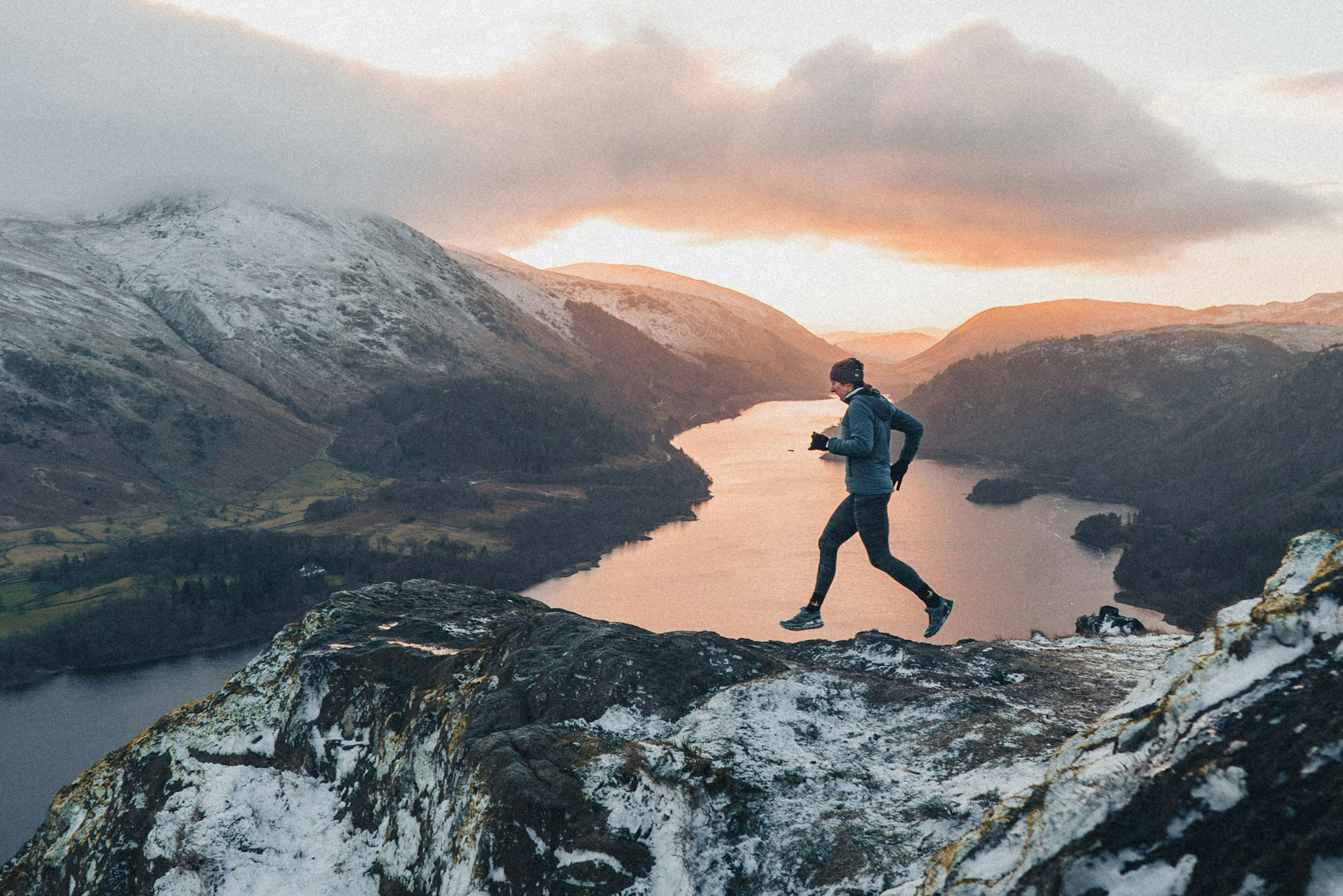As the temperatures drop, it’s hard to stay motivated and the thought of outdoor workouts can feel daunting. But with a few smart strategies, you can embrace winter exercise and stay in peak shape, even in chilly conditions. Here’s how to boost your winter fitness:
1. Embrace the Cold Weather Challenge
Cold weather not only affects how you feel but also impacts your body’s performance. The science says that when temperatures dip, your body struggles to maintain its usual energy levels, resulting in reduced endurance and making your muscles work harder to achieve the same performance level.
Pro Tip: Embrace the challenge knowing that winter training can improve your body’s endurance by pushing it to adapt to tougher conditions. If you exercise regularly outdoors during winter, by the time spring comes around, you’ll have built up an good level of residual fitness, so you can push your training to the next level.
2. Layer Up for Comfort
In cold weather, your clothing choice is key to staying comfortable. Layering allows you to control your body temperature effectively. Start with a moisture-wicking base layer to keep sweat off your skin, add an insulating layer for warmth, and finish with a wind-resistant outer layer.
Pro Tip: Avoid overdressing. As you warm up, excess clothing may cause sweating, which can lead to chills.
Personal Tip: For base layers, I prefer natural fibers like merino wool since they’re comfortable and less prone to odor. Icebreaker, for example, makes high-quality merino base layers that can be a game-changer in the winter. Merino keeps me warm without feeling bulky, and I can rely on it to stay fresh, even after intense workouts.
Must-Haves: Thermal leggings, breathable tops, a lightweight jacket, and a pair of moisture-wicking socks.
3. Let Your Body Adjust Gradually
Don’t push it out of the gate. Ease yourself into your cold-weather workouts by starting with shorter sessions to allow your body to adjust. Warm up indoors, so that your body’s limbered up when you get outside. Regular exposure to the cold over time can make it feel less intense and improve your tolerance.
Pro Tip: Aim to exercise consistently in the cold so that, by mid-season, your body becomes accustomed to lower temperatures.
Personal Tip: I like to run up and down the stairs a few times and throw in some push-ups to get the blood flowing before heading outside.
4. Use Cold as a Workout Booster
Harness the benefits of Brown Fat: Training outside in cold weather has the unique benefit of activating a specific type of fat in your body known as brown fat. Unlike regular white fat, which stores energy, brown fat burns calories to generate heat. When you exercise in the cold, brown fat activates to help maintain your body temperature, especially as temperatures drop, just before you start shivering.
How to Activate Brown Fat: There are ways to stimulate brown fat beyond just heading outside in winter. According to the Cleveland Clinic, turning down the thermostat, taking cold showers, or even braving an ice bath can help activate this type of fat. Once activated, brown fat helps your body produce more heat, which not only keeps you warmer but also increases your energy expenditure, meaning you burn more calories even at rest.
The Impact on Winter Fitness: This calorie-burning effect can be a great tool for anyone looking to maximize their winter workout. By incorporating cold-weather training and occasional cold exposure, you may increase your body’s metabolic rate and enhance your overall endurance.
Inspiration: Think of brown fat as your body’s internal heater, working to keep you warm while providing an extra metabolic boost. While you might not feel the immediate effects, the cumulative benefits of regular cold exposure and winter workouts can add up over the season, supporting cardiovascular health and potentially aiding weight management. And, although you may not be swimming in icy lakes, consistent winter training can still have similar benefits.
5. Stay Warm but Don’t Overheat
The Importance of Warm-Ups and Cool-Downs: In winter, a good warm-up is essential. It’s not only about getting the blood flowing but also preparing your body for the cold. Spend extra time warming up indoors to prevent muscle strains when you head out.
Safety Note: Once you hit your stride, try to avoid breaking into a full sweat, as damp clothing can lower your body temperature, leading to discomfort and, if you’re out all day, a risk of hypothermia.
6. Keep Your Extremities Warm
Don’t Forget Your Hands, Feet, and Ears: Cold extremities can make any winter workout feel unbearable. Your fingers, toes, and ears are especially vulnerable to the cold, as they have less blood flow than other areas of the body. Gloves, warm socks, and a good hat or headband are essential to protect these areas.
Personal Tip: When wearing thick socks, make sure your running shoes or boots aren’t too tight. I’ve found it’s better to have a bit of wiggle room for your toes to keep the circulation flowing, which helps keep your feet warmer. Restricting circulation with tight footwear can actually make your toes colder, so opt for shoes with a little extra space.
Must-Haves: Insulated gloves, moisture-wicking socks, and a wind-resistant hat or headband.
7. Winter Cycling: Stay Safe and Visible
Gear Up for Low Light and Slippery Roads: Winter cycling presents unique challenges, from reduced daylight to slippery surfaces. Visibility is key, so make sure you’re wearing high-visibility clothing and have bright bike lights on both the front and rear. This ensures you’re easily seen by other road users in low-light conditions.
Prepare Your Bike: Check that your tires are suitable for winter riding. Wider tires with better grip can help reduce the risk of slipping on wet or frosty surfaces, giving you more stability.
Stay Warm and Protected: An under-helmet balaclava or snood can make a big difference by keeping the wind chill off your ears and neck, making your ride much more comfortable in the cold.
Personal Tip: If the temperature drops below 4°C, consider an alternative workout. Black ice can be hard to spot, and the risk of slipping increases significantly. On those particularly cold days, you might be better off swapping your ride for a run, which is safer and still gives you a great cardio workout.
Must-Haves: High-visibility jacket, front and rear lights, grippy tires, under-helmet balaclava or snood.
Final Thoughts
Winter workouts might not always feel inviting, but reframing your mindset can make all the difference. Instead of dreading the cold, see it as an opportunity to build both mental and physical resilience.
Think of each session as a chance to strengthen your endurance and push your limits. By spring, you’ll likely find yourself in better shape than ever, thanks to the hard work you put in during the winter months.
Winter workouts bring unique advantages, from boosting your metabolism to enhancing your stamina. With the right preparation and a positive mindset, you can turn the cold into an ally, keeping you fit, energized, and ready for the season ahead.



